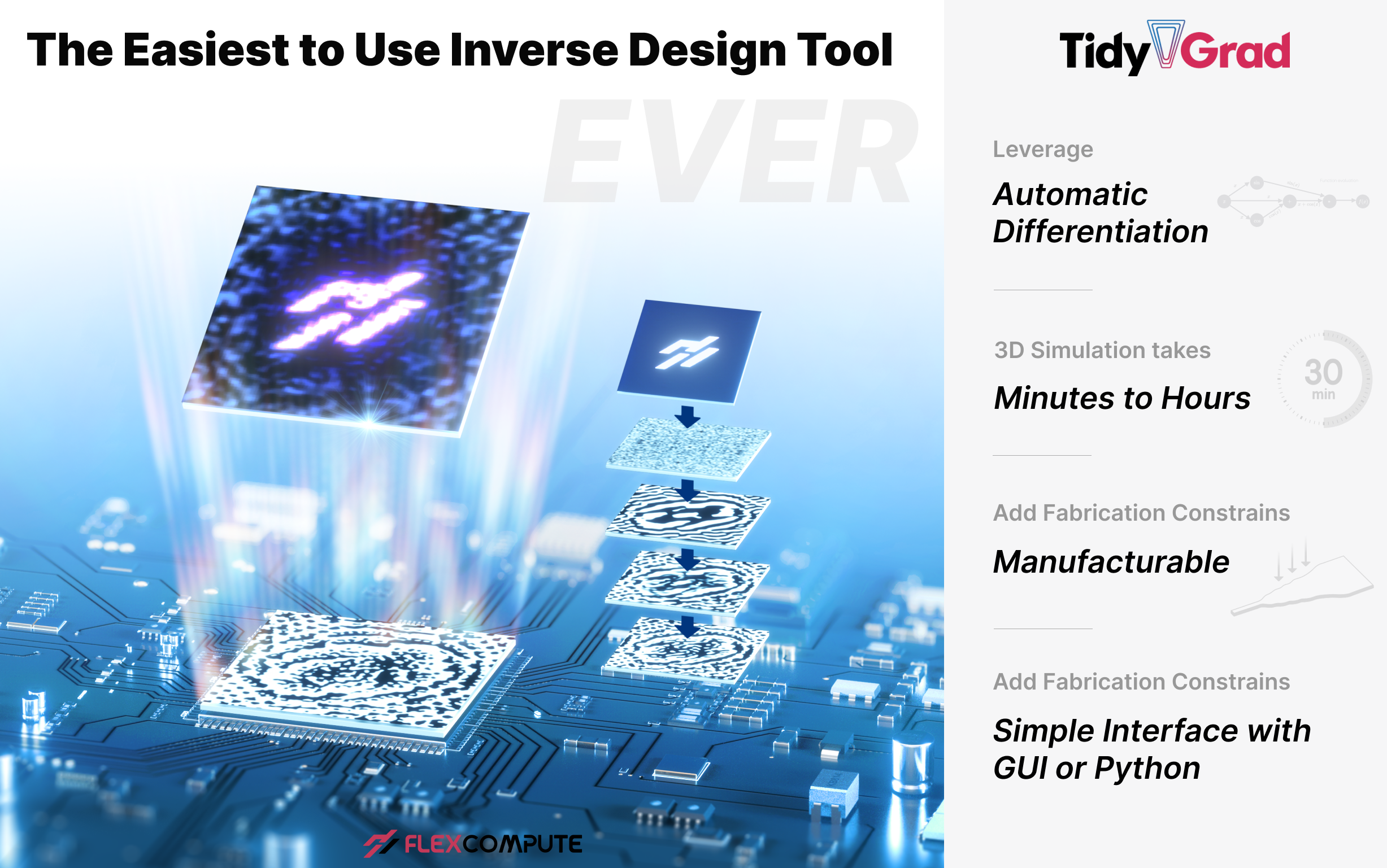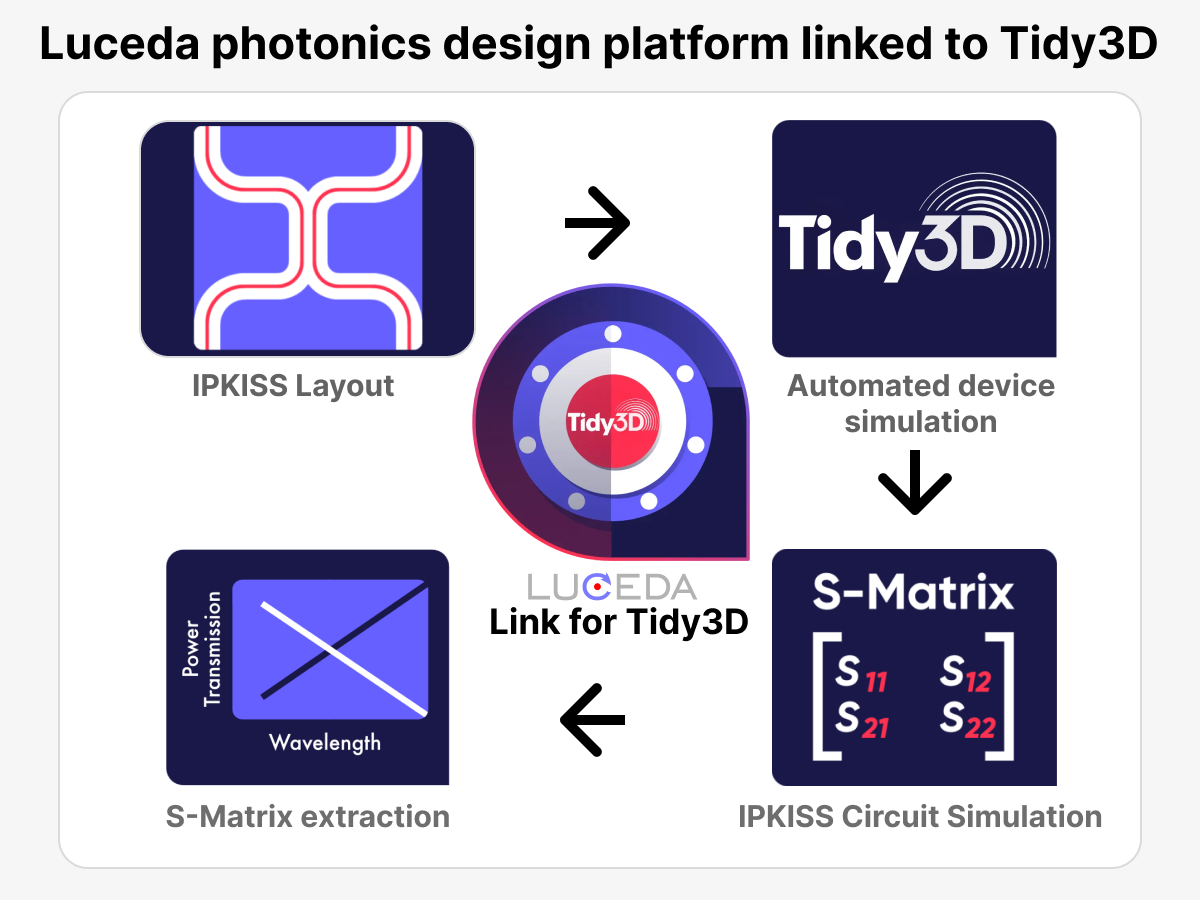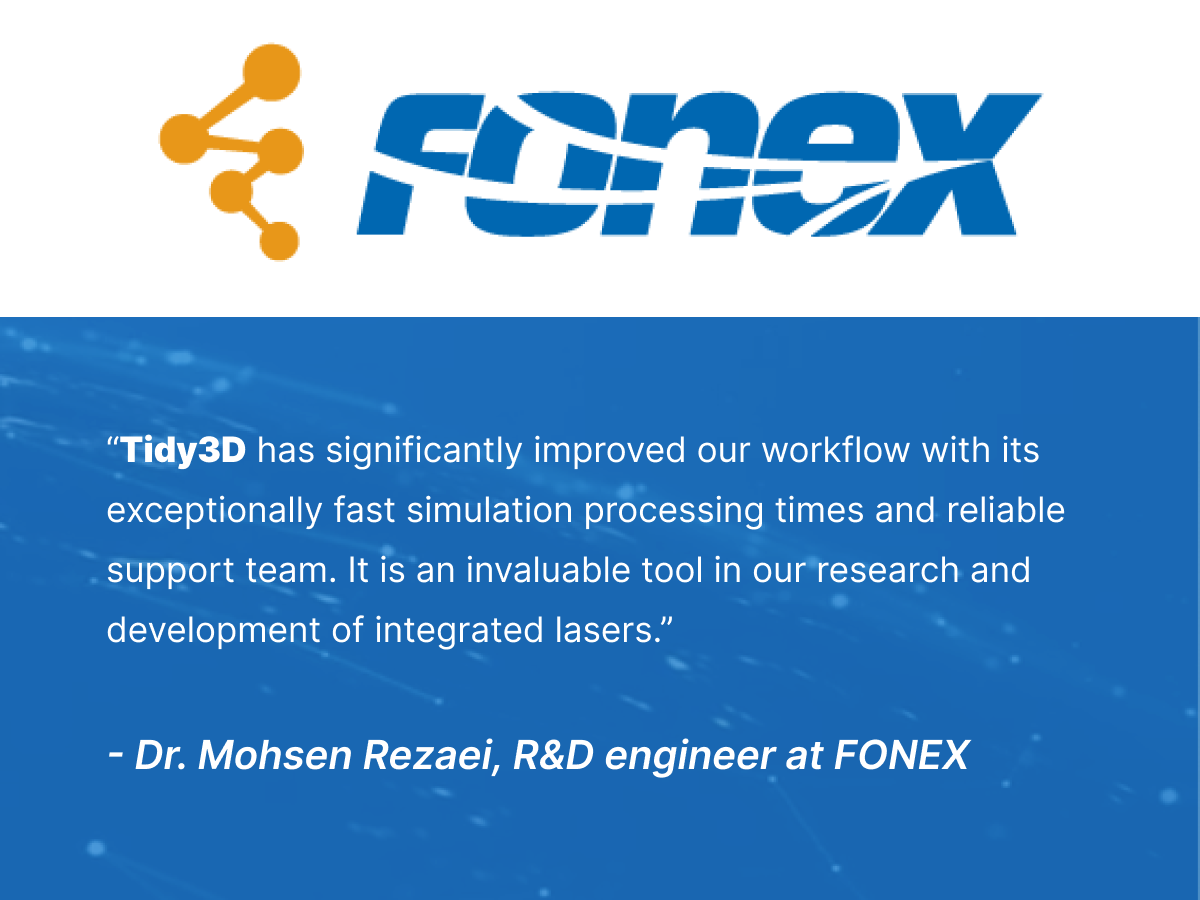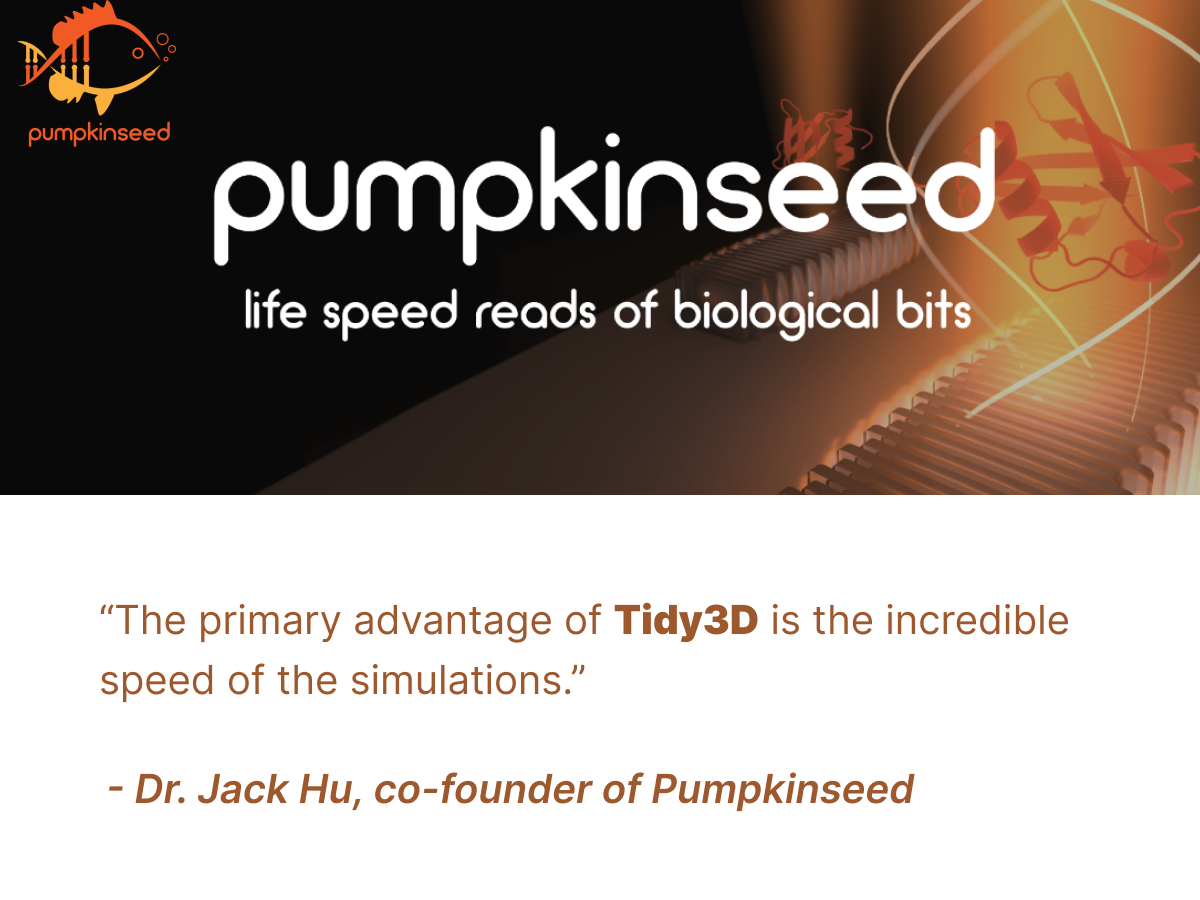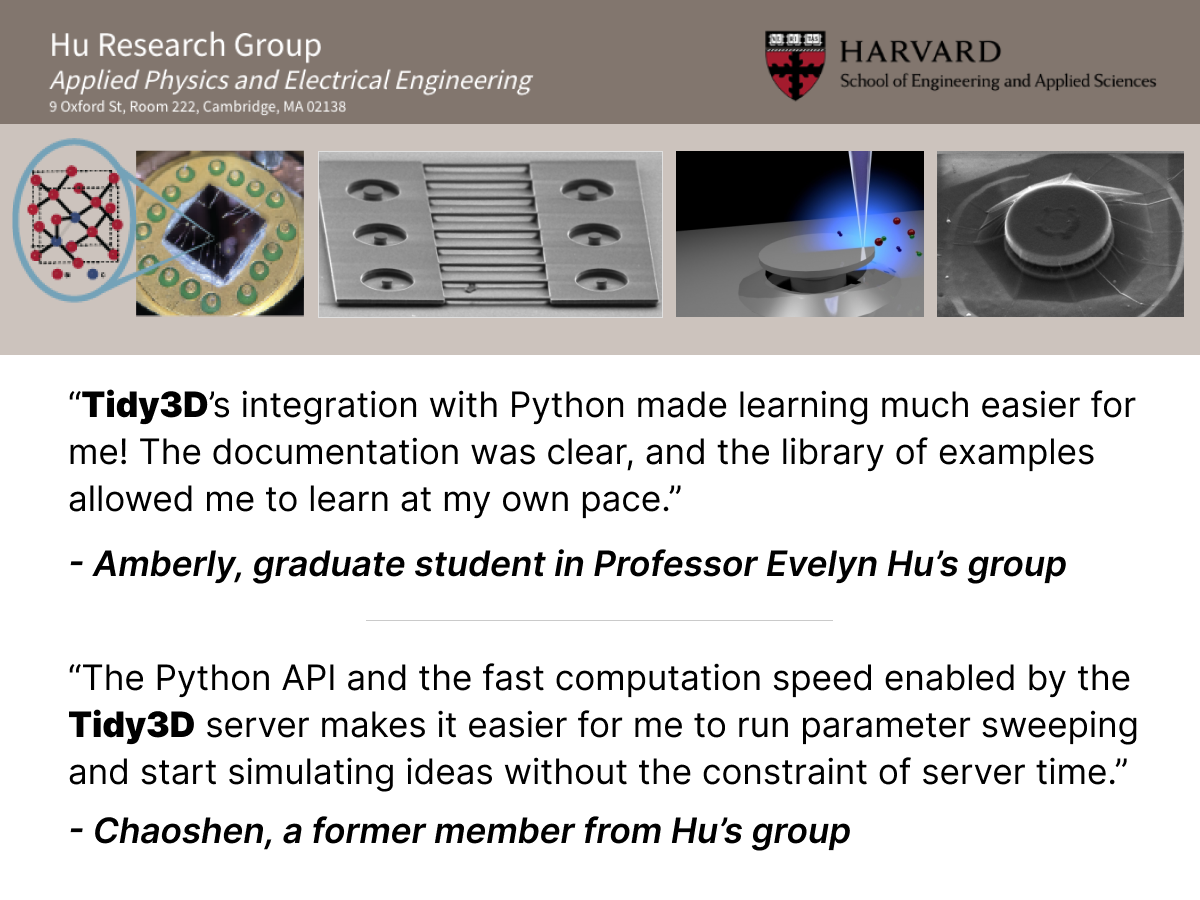Efficiency and Agility in Quantum Photonic Design: memQ's Journey with Tidy3D

Leading a project to optimize photonic device design, Dr. Sean Sullivan, CTO at memQ Inc., was hampered by slow photonic simulation solutions, which slowed the chip design, fabrication, and testing cycle time. As a startup developing new quantum photonic hardware for long-distance distributed quantum information, memQ was time and resource-limited and running simulations on their local machines was suboptimal. They were looking for a more efficient way of quickly tweaking and testing new designs.
After hearing positive feedback from colleagues, Sean implemented a new set of simulations and designs using Tidy3D, an electromagnetic simulation software product by Flexcompute. Tidy3D’s fast and web-based simulations helped memQ test out designs and get quick feedback on their design cycle. They were also able to avoid investing in building their own computational infrastructure, such as managing their own cluster or building multiple workstations, or even having to install any software.

Sean and his team find value especially in Tidy3D’s adjoint optimization feature, which helps tackle one of the biggest challenges that quantum photonics is facing—reducing photon loss. They are excited that Tidy3D continues to add more features to this package, which can enable new paradigms for photonic device design.
Sean appreciated how the Tidy3D team responded to the needs of startup customers like memQ, which are racing to market with new solid-state hardware designs. He found it reassuring to work with a company that could implement features and changes quickly, something that might not be possible with a larger simulation provider.
Tidy3D’s cloud-based approach to software saves companies like memQ from having to own and operate computing hardware, all while spending 10-100x less time waiting for simulation results. Lower costs and quicker design insights are gamechangers for memQ, shifting their focus from administering complex legacy simulation tools toward enabling our quantum future.
